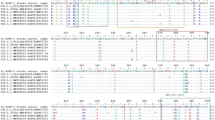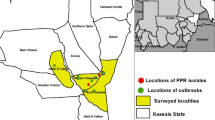Abstract
Tembusu virus (TMUV) is an important pathogen that causes acute egg drop syndrome in poultry. To investigate the epidemiological status of Tembusu virus in Zhejiang province, we collected clinical samples and sera from the local area from 2010 to 2016. A total of 41 out of the 88 collected tissue samples were identified as TMUV-infected by RT-PCR and were confirmed by sequencing. Six TMUV strains were isolated from TMUV-positive samples, and their complete genome sequences were determined. In addition, 19 E gene sequences amplified from RT-PCR-positive samples were determined. Sequence identity values among the 19 E genes and reference E sequences ranged from 96.8% to 100.0%, and they ranged from 97.3% to 99.9% when comparing the six genome sequences and references. Nineteen sites with amino acid mutations were identified in the E protein of nineteen strains, and these were at positions that are usually conserved in other TMUV strains. Antibodies to TMUV in serum samples were detected by indirect ELISA using recombinant EDIII (domain III of the E protein) as the antigen. The results showed that TMUV-specific antibodies were widely present in duck populations, with positive rates of 17.38%, 21.99%, 26.68%, and 17.79% in 2013, 2014, 2015 and 2016, respectively. The data from this study provide a good understanding of the epidemiology of TMUV infections in Zhejiang, China.





Similar content being viewed by others
References
Cao Z et al (2011) Tembusu virus in ducks, china. Emerg Infect Dis 17(10):1873–1875
Yan P et al (2011) An infectious disease of ducks caused by a newly emerged Tembusu virus strain in mainland China. Virology 417(1):1–8
Su J et al (2011) Duck egg-drop syndrome caused by BYD virus, a new Tembusu-related flavivirus. PLos One 6(3):e18106
Homonnay ZG et al (2014) Tembusu-like flavivirus (Perak virus) as the cause of neurological disease outbreaks in young Pekin duck. Avian Pathol 43(6):552–560
Platt GS, Al E (1975) Arbovirus infections in Sarawak, October 1968–February 1970. Tembusu and Sindbis virus isolations from mosquitoes. Ann Trop Med Parasitol 69(1):65–71
Pandey BD et al (1999) Identification of a flavivirus isolated from mosquitos in Chiang Mai Thailand. Southeast Asian J Trop Med Public Health 30(1):161–165
Kono Y et al (2000) Encephalitis and retarded growth of chicks caused by Sitiawan virus, a new isolate belonging to the genus Flavivirus. Am J Trop Med Hyg 63(1–2):94–101
Lei W et al (2017) The genetic characteristics and evolution of Tembusu virus. Vet Microbiol 201:32–41
Dai L, Li Z, Tao P (2015) Evolutionary analysis of Tembusu virus: evidence for the emergence of a dominant genotype. Infect Genet Evol 32:124–129
Yu K et al (2013) Structural, antigenic, and evolutionary characterizations of the envelope protein of newly emerging Duck Tembusu Virus. PLos One 8(8):e71319
Mackenzie JS, Gubler DJ, Petersen LR (2004) Emerging flaviviruses: the spread and resurgence of Japanese encephalitis, West Nile and dengue viruses. Nat Med 10(12):98–109
Tang Y et al (2015) Isolation and genetic characterization of a Tembusu virus strain isolated from mosquitoes in Shandong, China. Transbound Emerg Dis 62(2):209–216
Zhang Y et al (2015) Evidence of possible vertical transmission of Tembusu virus in ducks. Vet Microbiol 179(3–4):149–154
Li X et al (2015) Airborne transmission of a novel Tembusu virus in ducks. J Clin Microbiol 53(8):2734–2736
Huang X et al (2013) Identification and molecular characterization of a novel flavivirus isolated from geese in China. Res Vet Sci 94(3):774–780
Guang-Hua FU et al. (2014) Genome sequence and phylogenetic analysis of Tembusu viruses isolated from chicken. Chin J Vet Sci 34(9):1418–1422
Liu P et al (2012) Genomic and antigenic characterization of the newly emerging Chinese duck egg-drop syndrome flavivirus: genomic comparison with Tembusu and Sitiawan viruses. J Gen Virol 93(10):2158–2170
Tang Y et al (2013) Characterization of a Tembusu Virus isolated from naturally infected house sparrows (Passer domesticus) in Northern China. Transbound Emerg Dis 60(2):152–158
Tang Y et al (2013) Tembusu virus in human, China. Transbound Emerg Dis 60(3):193–196
Li C et al (2016) Epitope identification and application for diagnosis of duck Tembusu virus infections in ducks. Viruses 8(11):306
Fritz R, Stiasny K, Heinz FX (2008) Identification of specific histidines as pH sensors in flavivirus membrane fusion. J Cell Biol 183(2):353–361
Li C et al (2016) Identification of a new broadly cross-reactive epitope within domain III of the duck Tembusu virus E protein. Sci Rep 6:36288
Davis CW et al (2006) The location of asparagine-linked glycans on West Nile virions controls their interactions with CD209 (dendritic cell-specific ICAM-3 grabbing nonintegrin). J Biol Chem 281(48):37183–37194
Hanna SL et al (2005) N-linked glycosylation of west nile virus envelope proteins influences particle assembly and infectivity. J Virol 79(21):13262–13274
Wang D et al (2016) Preparation and antigenicity analysis of monoclonal antibody against the truncated E protein of avian Tembusu virus. Chin Vet Sci 7:805–813 (in Chineses)
Funding
This study was funded by National Key Technology R & D Program of China (Grant number 2015BAD12B01).
Author information
Authors and Affiliations
Corresponding author
Ethics declarations
Conflict of interest
The authors declare that they have no conflict of interest.
Ethical approval
The animal treatments were approved and performed in accordance with the animal ethics guidelines and approved procedures of the Committee on the Ethics of Animal Care and Use of Zhejiang University (ZJU20170388).
Additional information
Handling Editor: Tatjana Avsic-Zupanc.
Electronic supplementary material
Below is the link to the electronic supplementary material.
Rights and permissions
About this article
Cite this article
Huang, X., Qiu, H., Peng, X. et al. Molecular analysis and serological survey of Tembusu virus infection in Zhejiang, China, 2010-2016. Arch Virol 163, 3225–3234 (2018). https://doi.org/10.1007/s00705-018-3994-4
Received:
Accepted:
Published:
Issue Date:
DOI: https://doi.org/10.1007/s00705-018-3994-4




